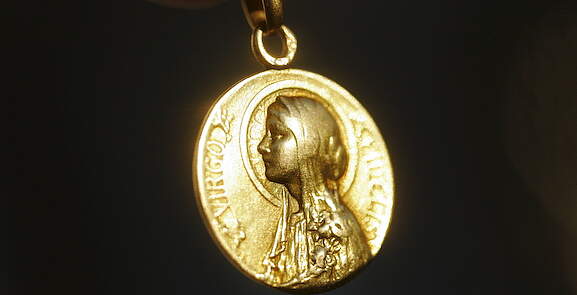
Charlemagne (d. 814) was crowned in the basilica of Aachen (Germany), which he had dedicated to the Mother of God. He received the relic of the belt of the Blessed Virgin given to him by the Empress of Constantinople (today Istanbul,Turkey) with great devotion and wore a medal of Our Lady around his neck all his life. As he was nearing his death, he asked to be buried with a statue of the Madonna and Child placed on his heart.
After his death, the Council of Mainz (Germany) instituted the feast of the Assumption in the whole Frankish Empire. Charlemagne's empire marked the end of feudalism and the beginning of the unification of Europe, which was born at the same time as Christianity, under the protection of the Mother of God.
In 778, weary of the stubborn resistance of the Saracen Lord Mirat in the citadel of Mirambel (now the citadel of Lourdes), Charlemagne was about to give up and lift the siege, when his friend Turpin, bishop of Puy-en-Velay (southern France), had an inspiration. He obtained permission to go and parley with the besieged, asking Mirat whether he would accept to sign the treaty of surrender not to Charlemagne, but to the Queen of Heaven.
The terms of the surrender were agreeable to the Moorish chief, who laid down his arms at the feet of the Black Madonna of Le Puy, and was baptized. On the day of his baptism, Mirat changed his name to Lorus, which became the name of his city, and later “Lourdes.” A thousand years before her apparition to Saint Bernadette, the Virgin had thus officially been given dominion over the place where she appeared in the 19th century!
Françoise Breynaert (Marie de Nazareth)